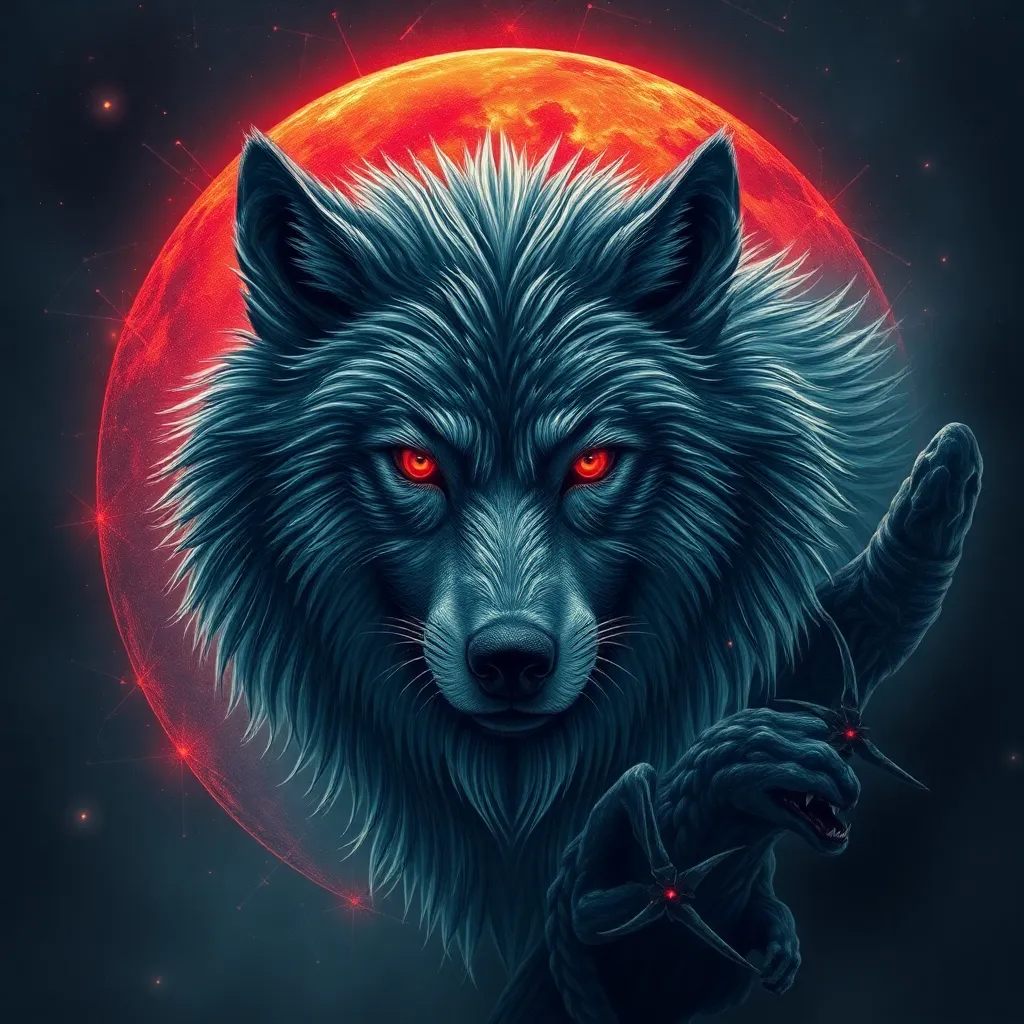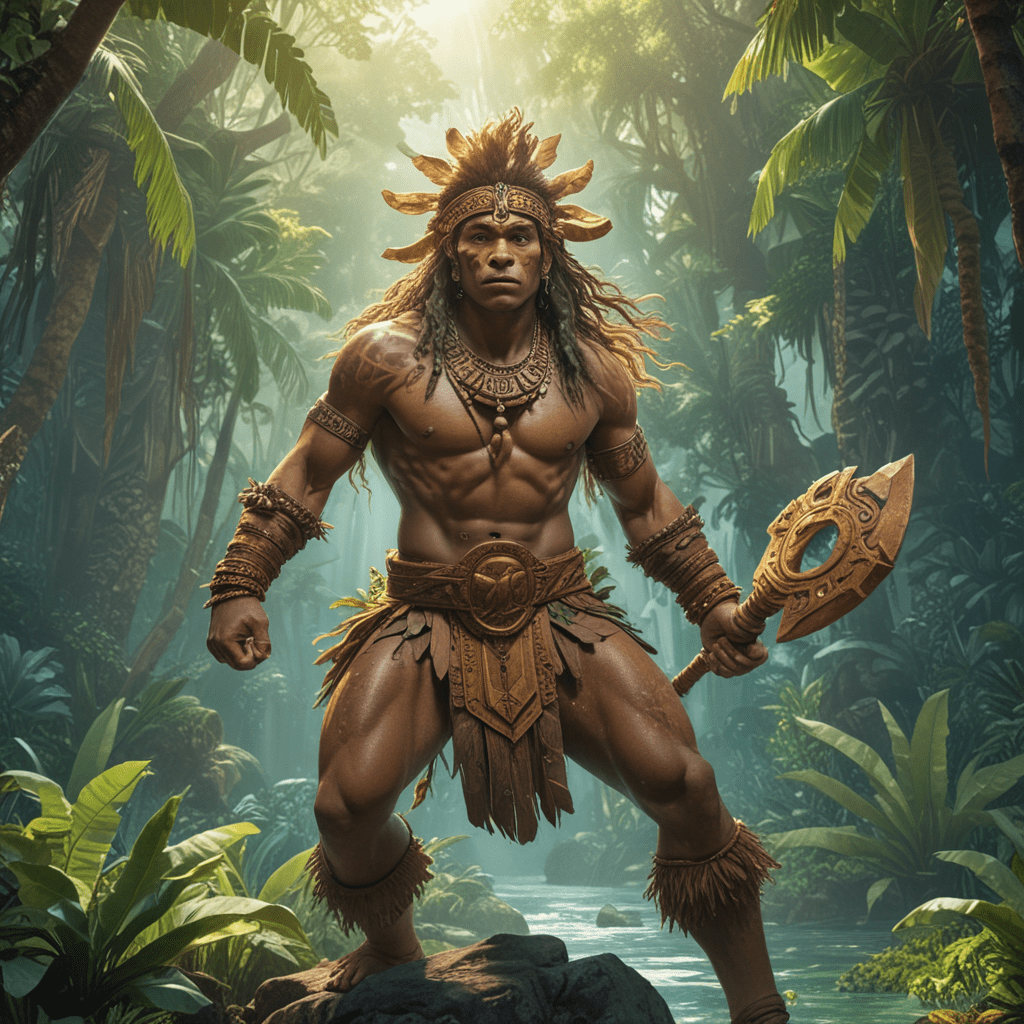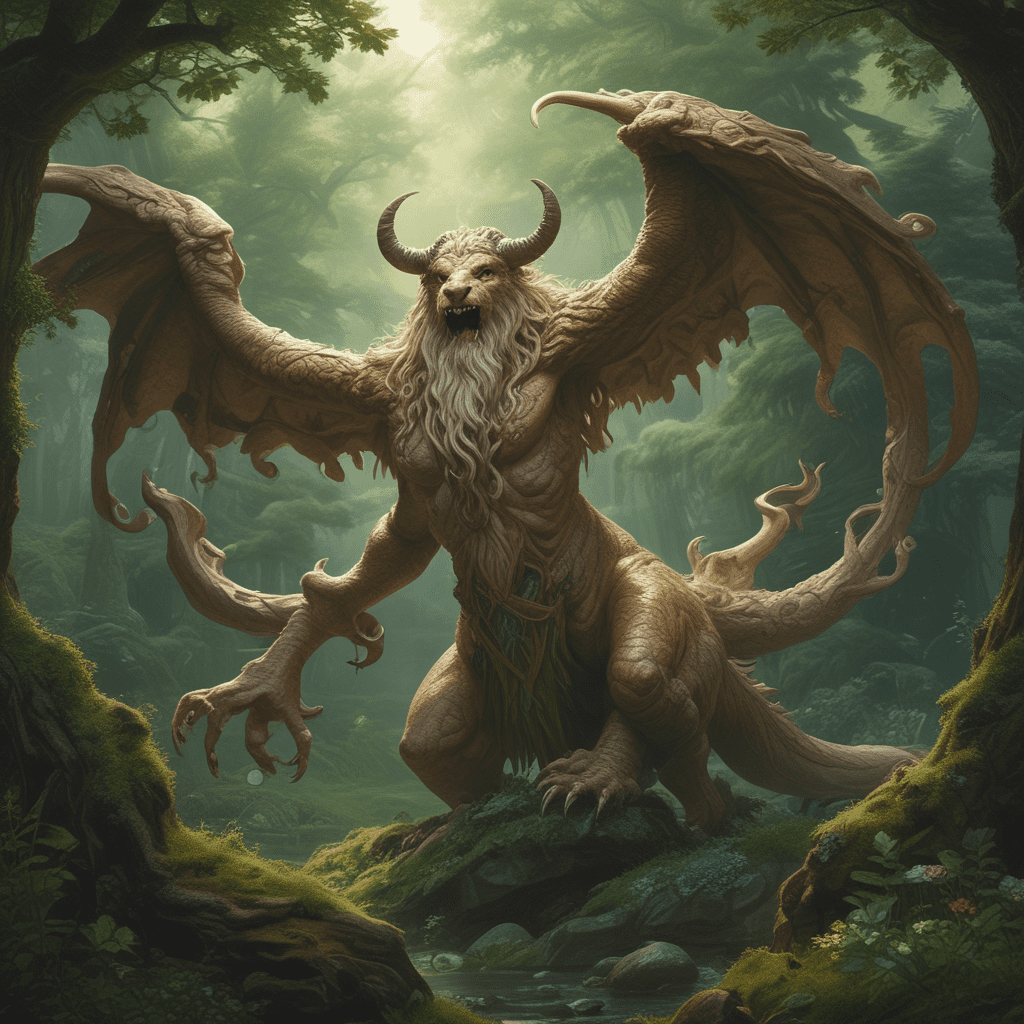Fenrir in Contemporary Art: The Wolf’s Representation in Modern Creative Expression
I. Introduction
Fenrir, the monstrous wolf of Norse mythology, stands as a potent symbol of chaos, destruction, and the inevitable cycle of life and death. As a creature born from Loki and the giantess Angerboda, Fenrir’s narrative is deeply entwined with themes of fate and the end of the world, known in Norse lore as Ragnarok. His ferocity and strength have not only made him a significant figure in ancient stories but also a compelling symbol in contemporary art.
This article aims to explore Fenrir’s representation in modern creative expression, examining how artists interpret his mythological background, the symbolism he embodies, and the emotional and societal reflections that emerge through his depiction.
II. The Mythological Background of Fenrir
Fenrir’s origins are rooted in the rich tapestry of Norse mythology. He is one of the three children of Loki and Angerboda, alongside Hel and Jörmungandr. Prophecies foretold that Fenrir would be instrumental in the destruction of the gods during Ragnarok, leading to his eventual binding by the gods in a futile attempt to control him.
Key stories associated with Fenrir include his binding with the magical chain Gleipnir and the prophecy that he would kill Odin, the chief of the gods, during Ragnarok. His character has evolved into a symbol of untamed nature and the destruction that accompanies it, reflecting humanity’s complex relationship with chaos.
The wolf, as a symbol in mythology, has undergone significant evolution, often representing duality—both protector and destroyer. This duality resonates in contemporary artistic interpretations of Fenrir.
III. Fenrir as a Symbol of Chaos and Destruction
Fenrir’s role in Ragnarok is pivotal; he embodies the chaos that leads to the downfall of the gods. This theme of chaos and destruction is prevalent in contemporary art, where artists explore the fragility of order in society.
- Artists like H. R. Giger have used dark, biomechanical aesthetics to convey themes of chaos akin to Fenrir’s destructive nature.
- Yves Klein, through his monochrome paintings, has illustrated the void that chaos leaves behind, paralleling Fenrir’s devastating impact during Ragnarok.
These representations serve as a reminder of the chaotic forces that exist in the world and how they can disrupt established norms and realities.
IV. Fenrir and the Human Condition
The themes surrounding Fenrir extend beyond mere chaos; they delve into the human condition itself. Fear, power, and existentialism are intertwined in Fenrir’s narrative, reflecting our innermost anxieties and the struggles for control in a chaotic world.
The wolf often serves as a mirror for human emotions, symbolizing our primal instincts and societal issues:
- Fear of the unknown and uncontrollable aspects of life.
- The power dynamics between individuals and authority.
- Existential questions about purpose and destiny.
Case studies of modern artworks reveal these themes:
- Fenrir by artist Robert Gober uses mixed media to portray the wolf as an embodiment of societal fears.
- Ragnarok by Julie Mehretu incorporates chaotic urban landscapes that parallel the destructive essence of Fenrir.
V. The Aesthetic Representation of Fenrir
The visual representation of Fenrir in contemporary art spans various styles and mediums. Artists have embraced a multitude of techniques to capture the essence of this mythical wolf.
Digital art and mixed media have particularly transformed the portrayal of Fenrir:
- Digital artists such as Beeple create immersive landscapes where Fenrir symbolizes the clash between nature and technology.
- Mixed media installations often incorporate elements of the natural world, emphasizing Fenrir’s connection to primal instincts.
Notable contemporary artists who incorporate Fenrir into their work include:
- Marina Abramović, whose performances evoke the raw energy and chaos associated with Fenrir.
- Takashi Murakami, who blends traditional Japanese aesthetics with modern themes, echoing the duality of Fenrir.
VI. Cross-Cultural Interpretations of Fenrir
Fenrir’s representation is not confined to Norse mythology; it has transcended cultural boundaries, inspiring various interpretations across different cultures and art forms.
Artists worldwide have drawn upon the narrative of Fenrir, blending it with local myths and stories, thereby enriching the global artistic landscape:
- In Japanese culture, the wolf is often viewed as a protector, contrasting with Fenrir’s destructive image.
- In Native American mythology, wolves symbolize loyalty and community, showcasing the multifaceted nature of the wolf archetype.
This cross-cultural exploration highlights the global impact of Norse mythology and its resonance in contemporary art, with artists weaving together diverse narratives that echo Fenrir’s story.
VII. Fenrir in Popular Culture and Media
The image of Fenrir has been significantly shaped by films, literature, and video games, influencing contemporary artistic expression. These media have introduced Fenrir to wider audiences, often reinterpreting his character to fit modern narratives.
For instance:
- In the Marvel Cinematic Universe, Fenrir is depicted as a fearsome beast, drawing from his mythological roots while also appealing to modern sensibilities.
- Video games like God of War allow players to engage with Fenrir’s myth, reflecting themes of vengeance and fate.
These representations have influenced contemporary artists, prompting them to recontextualize Fenrir in their work, often reflecting on the complexities of modern existence.
VIII. Conclusion
Fenrir’s significance in contemporary art is profound, serving as a symbol of chaos, power, and the human condition. Through various artistic expressions, Fenrir remains a relevant figure, illustrating the ongoing dialogue between ancient mythology and modern creativity.
The transformative power of art allows us to reinterpret and reimagine mythological figures, ensuring their place in contemporary culture. As artists continue to explore Fenrir’s story, they invite us to reflect on our own experiences with chaos, destruction, and the primal forces that shape our existence.




